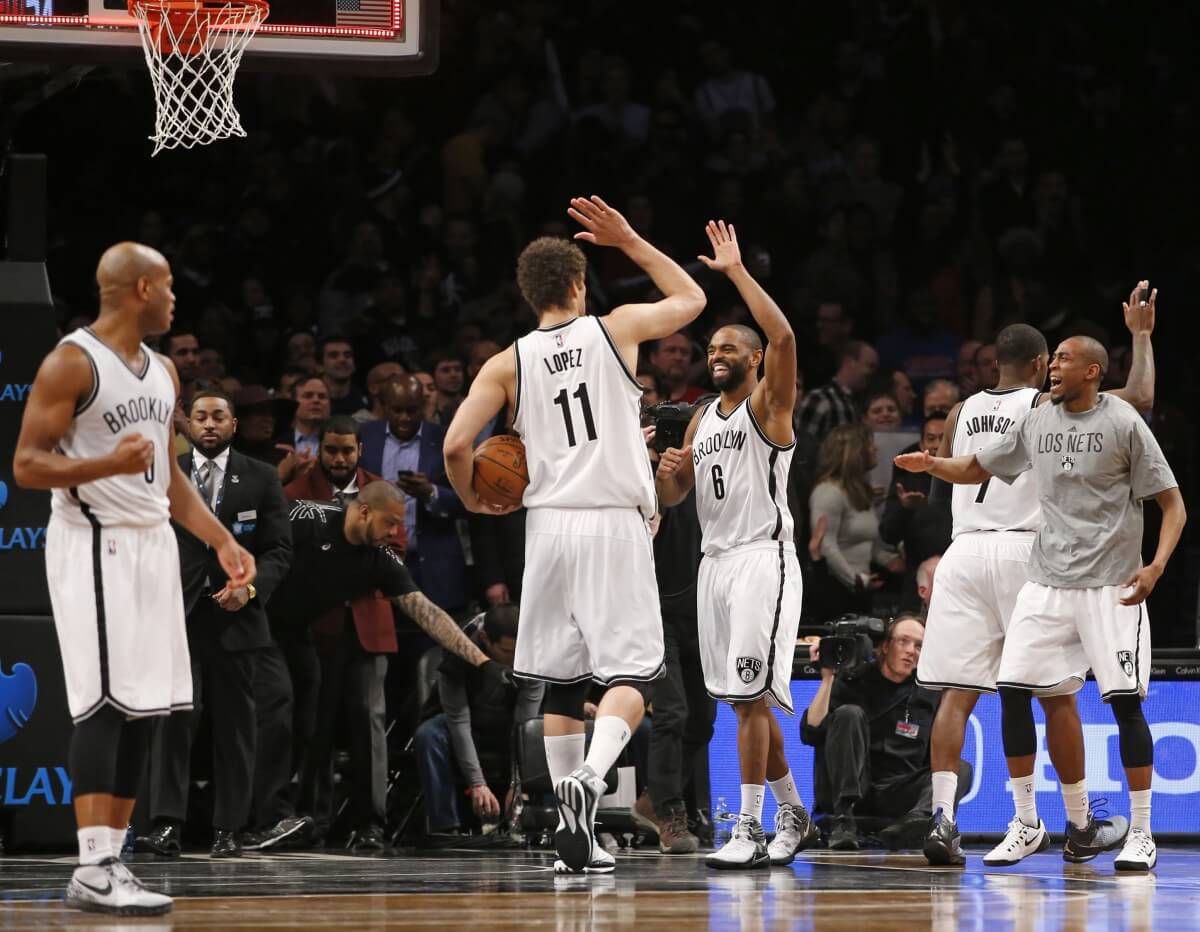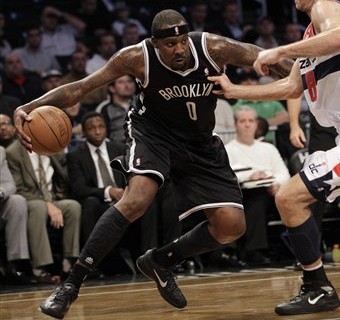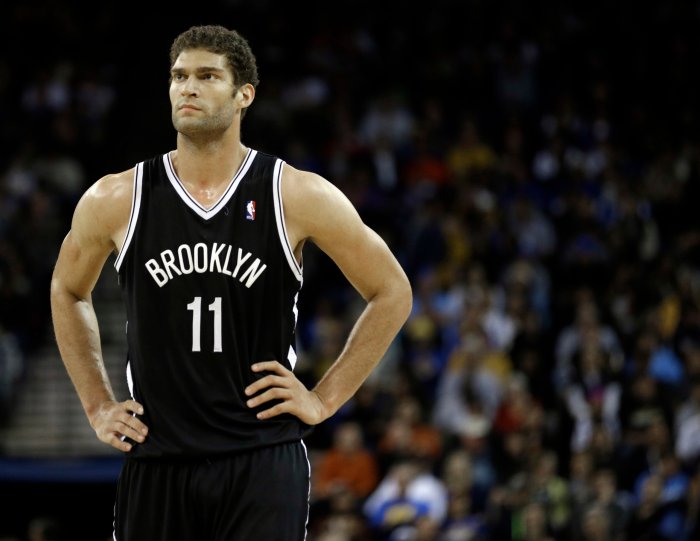
One of the quirks about following the Nets, from either a casual distance or with intense focus, is that you haven’t had to think much about market value. If the player was good, they paid for him. If he wasn’t good, well, they might have paid for him anyway. The money side was simple, even if nothing else followed suit.
But the team’s vision has changed. Luxury tax bills upwards of $90 million aren’t coming back any time soon. The value of the team’s players, relative to the salary cap, actually hold some importance now.
So how do we assess market value? Here’s one way. Basketball analytics blog Nylon Calculus took a deep dive into this very topic, coming out the other side with a solid formula. It goes thusly:
Market value = ((NBA cap / 41 ) * (wins above replacement player) + league-minimum contract.
The 41 relates to the 41 wins you’d need to be a .500 team, and the league-minimum salary adjusts for what a replacement player would presumably cost. It’s imperfect, but aren’t we all?
Using this as a baseline, I took a look at last year’s Nets value, as compared with their actual salary. I made one small change: I used ESPN’s wins above replacement metric (heretofore referred to as WAR) instead of multiplying Basketball-Reference’s VORP metric by 2.7. I did that because ESPN’s public WAR number is a bit more specific (it goes into the hundredths), and subjectively, I like it more — despite how it might undervalue Brook Lopez, who only registered a paltry 2.22 wins above replacement last season.
For example: Joe Johnson was worth an estimated 5.41 WAR last season. That’s not bad! But for his $23.1 million contract, you’d expect Johnson to provide around 14.5 WAR. What Johnson actually provided in terms of on-court value was worth about a $9.2 million deal — close to $14 million below his contract.
Here’s what last year’s team looked like in terms of salary value vs. salary cost:
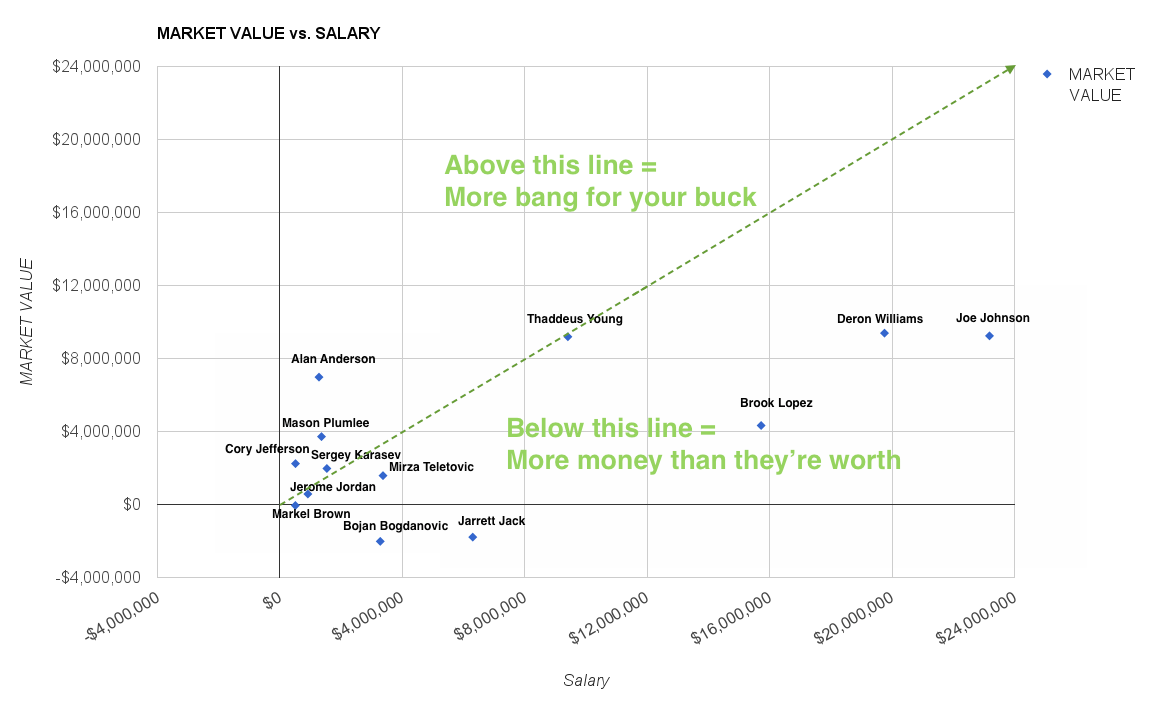
You’ll see kind of what you expect: Brooklyn’s “Big Three” was drastically overvalued, and nobody else was able to pick up the slack. Worse, the team’s best bang-for-their-buck players were Alan Anderson, Mason Plumlee, and Cory Jefferson — all of whom are gone.
But enough about last year. What about this season?
With some adjustments to the formula to account for the rising cap and new league minimum salaries, here’s the market value in terms of wins above replacement for each Nets player with a guaranteed deal, with a comparison chart for reference. For example: to live up to his $19.8 million salary, Lopez would roughly have to emulate Paul Millsap last year.
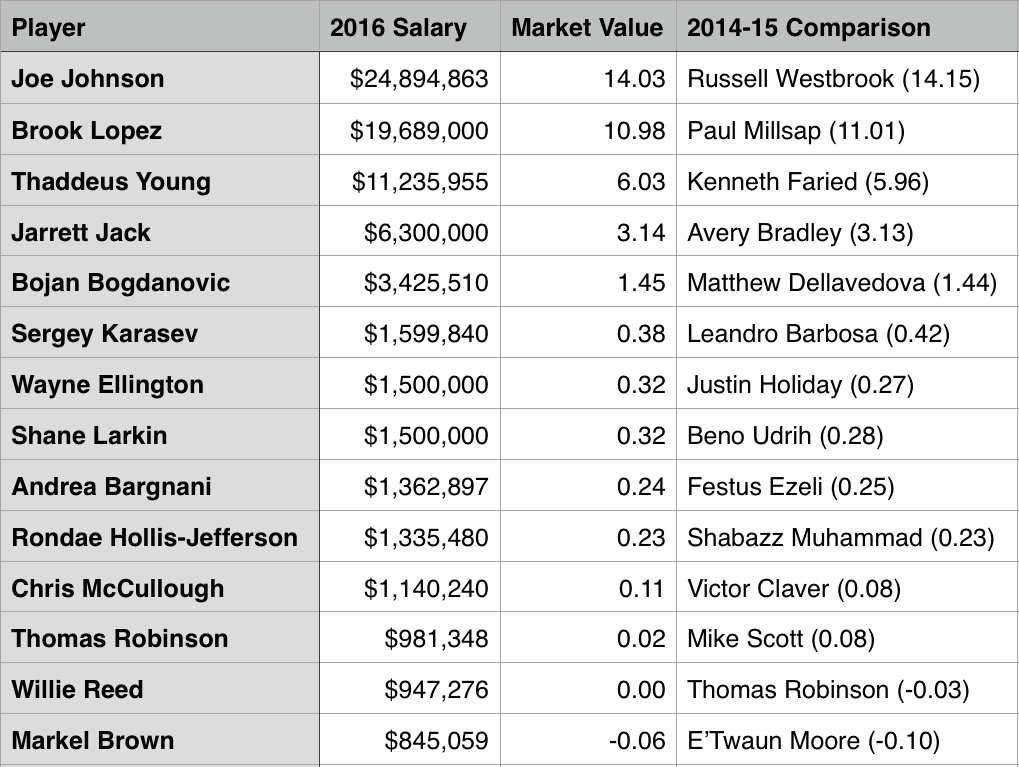
Obviously some of this isn’t happening. Joe Johnson isn’t going to produce like helldragon Russell Westbrook any time soon. Johnson’s value is in his steady scoring, expiring deal, and willingness to assert that “it’s not that bad here,” not his ability to eat triple-doubles like candy and sneer at reporters.
But beyond that, most of this seems reasonable. Brook Lopez could be in for a huge year if all goes well with his foot and his chemistry with the team’s point guards. Thaddeus Young produced a little over five wins last season split between two teams, and the stability next to Lopez should help bolster that. Bojan Bogdanovic is primed for a good year after a solid end to his rookie season. Jarrett Jack is somewhere between a Rorschach test about how you value a point guard and Schrödinger’s Jack; as long as the season hasn’t started, he is both a welcome change and a destructive force.
With a few Nets backups looking at potentially big minutes this year, there’s a chance for nomads Ellington, Larkin, Robinson, and Bargnani to make up a few wins here or there too. If just one of those four can produce one win above replacement, it’ll make up for the market value of all four combined (0.9). All it takes is one guy to break out and it can change your season. (Remember Shaun Livingston?)
Beyond the Nets, there’s a lot of interesting thoughts in that Nylon Calculus article on the value of different styles of contracts, the NBA’s “upper” and “lower middle-class,” and how to build a team. Check it out.
Nylon Calculus — Contract Value and Class Warfare in the NBA

